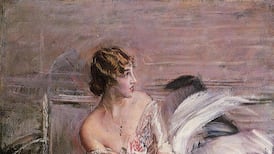One of the lesser-known invasions of Ireland – unmentioned on any Horslips album – was that of a tribe of Harvard archaeologists and their followers, who descended on this country in great force during the early 1930s.
They were searching for evidence of what was then still commonly assumed to have been one of Ireland’s better-known invasions: by Celts, 2,000 years earlier. But although their five-year occupation of parts of Westmeath, Offaly, Clare and other counties yielded many treasures, their success was also mixed.
If they did not retreat with tails between legs, eventually, neither had they found much trace of the “blue-eyed, fair-haired, spear-wielding warriors” for which some romantics hoped. In fact, it is now generally accepted that there never was a Celtic takeover of Ireland, at least not in the manner of the Viking or Norman ones.
The story of the Harvard archaeological mission is told in a new book, The Quest for the Irish Celt, by Mairéad Carew. This is a sober, scholarly work (with no mention of Horslips). But it nevertheless illustrates how, despite the project's scientific focus, it also reflected the mad politics of the time.
One of the driving forces behind the mission, for example, was the dubious science of eugenics, then popular in the US.
The idea of Ireland as home to an ancient civilisation that had escaped the globalisation of the Roman Empire had attractions for those who championed the purity of races. It also appealed to wealthy Irish-American backers of the project, who in the eyes of traditional US elites, still had to prove themselves white.
The project team excavated crannogs and burial sites, measured the skulls of the dead, and studied nose shapes and hair colours of the living
Another key contributor to the project, although he was here already as keeper of Irish antiquities and later director of the National Museum, was the Austrian Adolf Mahr: a brilliant archaeologist, but also a Nazi, and possibly a spy.
Then there was local politics. In general, the Harvard mission served as the archaeological wing of independent Ireland’s campaign to promote itself abroad. But the new Border was a diplomatic problem, especially as sites from both sides were being investigated.
Nationalist-minded archaeologists of the period sought prehistoric support for a united Ireland; unionists looked for evidence of ancient Ulster as a land apart. The Harvard scholars did their own thing.
But one leading member declared agreement with the Dublin government that the island was a unit, the Border “artificial”. And in 1938, Mahr described the North as Ireland’s “Sudeten”.
The ambition to prove artistic continuity between a presumed-Celtic prehistory and early-Christian Ireland was unfulfilled
Against this background, the project team excavated crannogs and burial sites, measured the skulls of the dead, and studied nose shapes and hair colours of the living. In the process, they uncovered many interesting facts and artefacts. Chief among the latter was a “Viking gaming board”, found at Ballinderry, Co Westmeath. The same site, presumed to have been occupied by someone important, also gave up a sword and a “hanging lamp”, which joined the gaming board in media celebrity.
One professor of Celtic Archaeology wrote jokingly that the owner of the house must have been a “pirate”. He had “brought together [...] some Norseman’s sword, carried by its original owner from South Germany; a hanging lamp stolen from some church; and a wooden draughtboard from the Isle of Man. These three incongruous objects now live together in a case in the museum and could exchange many queer reminiscences . . .”
But in general, joking aside, the findings suggested a messier past than some of the sponsors, including the government (which had subsidised the work through unemployment schemes), would have liked. The ambition to prove artistic continuity between a presumed-Celtic prehistory and early-Christian Ireland was unfulfilled.
Still, while it lasted, the project generated much positive coverage for Ireland. That this was needed is highlighted by one early report of the Ballinderry finds, in a Chicago newspaper, which declared breezily that they included a board game “used a thousand years before St Patrick” (actually the 10th century AD), alongside a “couple of smashed skulls”. The writer, who may have had a jaundiced view of the Irish, surmised: “This would seem to point at some ancient debate over rules.”
Faced with such lampoonery, the new Ireland could be excused some overcompensation. Two years later, its contribution to the 1934 Chicago World Fair included “The Pageant of the Celt”: a dramatic presentation at Soldier Field of the glories of ancient Irish history. The Ballinderry exhibits featured prominently, along with replicas of St Patrick’s Bell, the Tara Brooch, and the Ardagh chalice, all selected by Mahr to express “the genius of the old Celtic race”, and to suggest a smooth progression from the Celts to Christianity.











